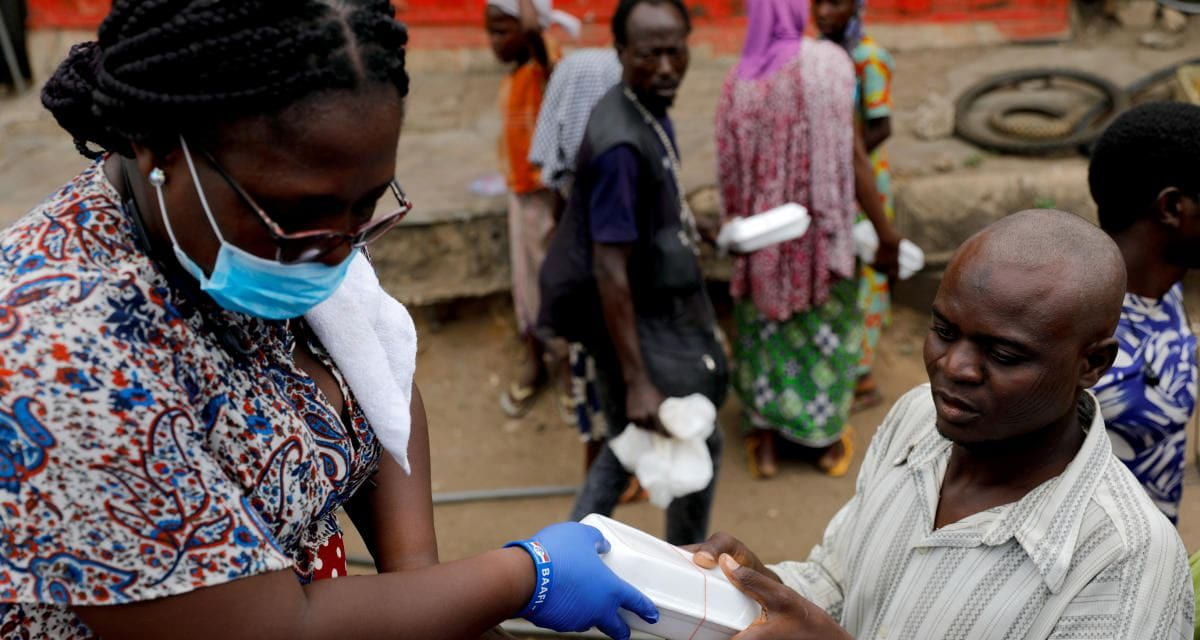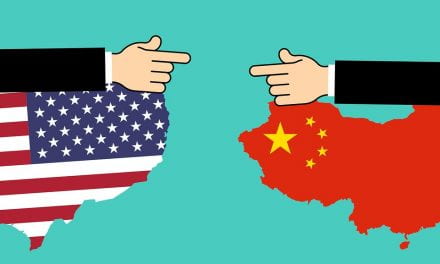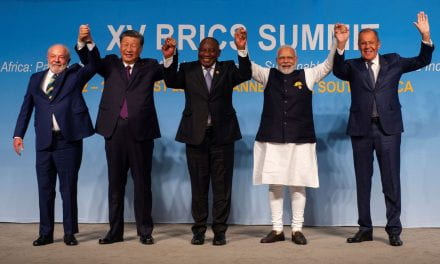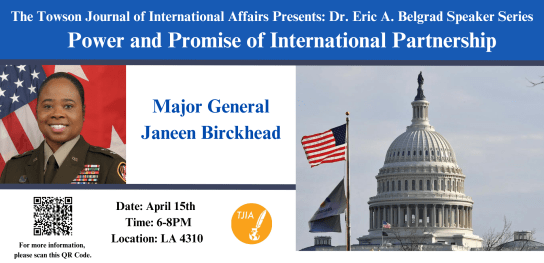Introduction
On January 30, 2020, the World Health Organization declared a public health emergency of international concern [1]. Since this announcement, the 2019-nCoV outbreak, better known as the Covid-19 pandemic, has swept across the globe, leading to over 113 million confirmed cases and over 2 million deaths [2]. In response, nations have enacted lockdowns and mask mandates. They have encouraged social distancing and frequent hand sanitation. Domestic health systems have mobilized to provide Covid-19 testing kits and vaccines, as well as ventilators and proper resources for hospitals in combating the health crisis. The story of the United States in the Covid-19 pandemic is one of a struggle to enforce public health regulations despite a developed economy, government, and health system. What, then, is the story of nations lacking in economic development? How are nations with underdeveloped government structures and weak health systems combating a global pandemic?
The United Nations currently classifies 46 nations as least developed countries and 126 nations as developing economies [3]. In low-income countries, limited resources can result in less access to health care and clean water. Resources may not only be less available to citizens, but also to the government when drafting policy in response to the Covid-19 pandemic. Governments of developing nations must find a way to mobilize attainable resources in order to save lives, even in the face of little economic flexibility. The heightened economic impact for developing countries, which are reliant on economic growth, also affects what regulations are implemented. Consequently, as circumstances impact policymaking, regulations enacted in developing countries must differ from those of developed countries.
Each state’s health policies will have a direct impact on its citizens health, well-being, and livelihood. Governments struggled to prioritize public safety while maintaining a stable economy during the Covid-19 pandemic and the balance between public health and economic stability has been pursued differently depending on the state. The outcomes to date reflect these choices. For example, Ghana, a country classified as a developing economy, has a Covid-19 death rate of 1.91 deaths per 100,000 people [4]. Compared to the United States’ 152.46 deaths per 100,000 people, its death rate is quite low [5]. Ghana’s government regulations have decreased the level of confirmed cases of the virus in part because of its initial partial lockdown, widespread testing, and other regulations that limited public gatherings and traveling were pursued more vigorously than in the US. Yet, due to its economic challenges, Ghana could not sustain its strong initial measures and confirmed cases began to rise. To explain the low death rates within Ghana, one can take an in depth look at the government responses to the pandemic. Ghana offers a clear example of how vigorous government regulations can compensate for an underdeveloped health system. By instituting a partial lockdown, mass testing, and restrictions on travel, Ghana demonstrated how these regulations would work even though they subsequently had to be eased to preserve livelihoods given the the limited economic mobility of a developing state.
External Factors Impacting Death Rates
It is important to note factors other than government regulations that may also lessen the Covid-19 death rate. The Covid-19 virus puts members of certain population groups at heightened risk, such as the elderly and those with pre-existing conditions. Thus, for example, the average age of the population affects the overall death rate, as populations with higher concentrations of elderly citizens are more vulnerable to Covid-19 related deaths. In order to account for the effect of the virus on the population, life expectancy prior to the pandemic must also be considered. In developing nations, individuals with cardiovascular disease, diabetes, and other pre-existing conditions are less likely to survive. As a result, the populations of developing countries are less vulnerable to the virus, as there is less of a concentration of those with pre-existing conditions. Consequently, countries with younger average populations, higher mortality rates, and lower life expectancies prior to the Covid-19 pandemic have lower death rates [6]. As a developing country, this is true for the population of Ghana as well.
In Ghana, the average age of the population is 21.1, compared to the United States’s average age of 38.3. Similarly, the life expectancy in Ghana is 64.1 years, while in the US it is 78.9 years [7]. The actions taken by the Ghanaian government have had an impact on reducing the Covid-19 deaths by limiting the spread of the virus. However, a comparison between death rates of developed and developing states risks overstating the effectiveness of government regulations, as environmental factors and the condition of existing health systems must be considered. Rather, the rate of confirmed cases should be noted. While the United States has over 8,000 confirmed cases per 100,000 individuals as of March 2021, Ghana’s confirmed cases per 100,000 people are within the 200s [8]. The stark difference in death rates may not reflect on government regulations but the rate of cases does. Similarly, unreported cases may skew existing data, as reported cases are often lower than existing ones. Still, analyzing a county’s reported cases allows for an understanding of the effectiveness of government regulations, especially in the presence of an underdeveloped health system.
Ghana’s Initial Response
Established in 1996, the Ghana Health Service is relatively young [9]. An arm of the Ministry of Health, the Ghana Health Service is responsible for administering medical services provided by the government, as well as implementing health care policy. Prior to the Covid-19 pandemic, the Ghana Health Service’s focus was on developing and maintaining programs to control HIV, malaria, and tuberculosis [10]. Over the last two decades, the health system in Ghana has undergone major reforms with the purpose of creating a health care system that is equitable, efficient, accessible, and responsive. The reforms, however, have proven to be more expensive than the government’s initial projections, limiting the scope of the reforms. When the first case of Covid-19 reached Ghana, only around 40% of the Ghanaian population had access to health care [11].
Ghana’s initial approach to the pandemic involved a partial lockdown, social distancing measures, travel restrictions and widespread testing. In fact, Ghana’s mandatory mass testing of citizens has been acknowledged as a large contributor to the country’s low death rate. The testing, which began during the partial lockdown, was largely conducted on those who had recently traveled outside of Ghana or those who had been contact traced to an individual testing positive for the virus. The first case of Covid-19 was reported on March 12, 2020 [12]. On March 16, the government introduced regulations to slow the spread of the virus. Public gatherings were limited to 25 people, schools and universities were indefinitely closed, and a mandatory two week self quarantine was imposed for citizens who had traveled to a country with over 200 cases. On March 23, Ghana closed its borders [13]. Then, on March 30, President Nana Akufo-Addo enacted a partial three week lockdown, in which Ghanaians could only leave their residence for essential purposes [14]. During the lockdown, the Ghanaian government conducted mass testing and contract tracing in order to contain the spread of the virus.
Post-Lockdown Ghana
On April 20, 2020, Ghana ended the lockdown. The government loosened restrictions, citing a better understanding of the virus, success in containing the spread of the virus, the establishment of a reliable testing system, the identification of potential hot spots, and the expansion of isolation and treatment centers as reasons to reopen society [15]. Ghana’s borders remained closed and the Ministry of Health recommended the use of social determinants of health such as wearing masks, social distancing, and the frequent sanitation of hands. Additionally, schools remained closed and religious and social gatherings remained restricted. Beginning in June, religious gatherings of less than 100 people maintaining social distances were permitted, in addition to schools and universities reopening. In August, tourist sites were reopened and restrictions of religious gatherings were eased further. In September, international flights were permitted [16].
The day the lockdown was lifted there were only 1,042 confirmed cases and 9 deaths in Ghana. Yet, confirmed cases kept increasing, reaching 40,000 in August, 50,000 in November, and 60,000 in January of 2021 [17]. On January 31, 2021, many restrictions were re-implemented, including limits on gatherings and the elimination of indoor dining [18]. As of February 27, 2021, Ghana has 82,586 confirmed cases and 594 Covid-19 deaths. At 265.78 confirmed Covid-19 cases per 100,000 individuals, Ghana has the highest rate of cases among neighboring states, and the second highest rate of cases within the region of Western Africa [19]. With rising cases in Ghana, the effectiveness of initial government regulations in containing the spread of the virus has been brought into question. The consideration of whether or not the measures should have been reintroduced sooner requires an understanding of the economic impact of government lockdowns on the Ghanaian people.
Economic Impacts of Response
Government regulations such as lockdowns and restrictions on restaurant dining affect more than public health and safety, they also affect the economy. Similarly, setting up care facilities with proper equipment and tests also places a financial burden on the government. In order to fund necessary improvements to medical facilities and obtain essential resources, Ghana spent around 104 million US dollars. Around 1.9 billion US dollars have been pledged by the government to combat the crisis. In order to utilize these funds, Ghana must cut spending on goods and services, financial transfers, and capital investment, affecting the government’s ability to fulfil responsibilities elsewhere. Additionally, Ghana has pulled from its stabilization fund and borrowed from the Bank of Ghana [20].
The economic impact of restrictive regulations is exacerbated in developing countries as they must strike a balance between preserving lives and protecting livelihood due to decreased financial mobility. All states are concerned with economic downturns in the face of an international health crisis, however, developing states cannot provide the same financial support to their citizens. The United States was able to issue a 1.9 trillion US dollar stimulus package to aid citizens in relief as a result of the economic downturn [21]. Ghana cannot offer the same financial relief to its citizens, as the US has a GDP of 87.732 trillion US dollars [22]. In contrast, Ghana’s GDP was recorded at 27.316 US dollars in 2019 [23]. A good portion of Ghana’s economy is dependent on oil, with 20% of total revenue from exports in 2018 resulting from the international trade of crude oil [24]. With lockdown restrictions in countries around the world, the demand for oil has fallen, negatively impacting Ghana’s economy. In addition to decreasing oil prices, the partial lockdown and various restrictions within Ghana have weakened the domestic economy further. The restrictions placed on in-person workplaces and travel have resulted in an economic downturn. The economic growth for 2020 was forecasted at 6.8% prior to the pandemic. In the midst of the partial lockdown, it was recalculated to be 1.5% [25]. In reality, the GDP growth for 2020 was .9% [26]. In wake of the Covid-19 pandemic, Ghana recorded its lowest rate of growth in 37 years [27].
Ghana’s most recent poverty rate was recorded in 2016 at 23.4% [28]. With a population of 30,779,000 people, 7,202,286 Ghanaians are living below the poverty line, increasing their vulnerability to economic downturns and the effects of lockdowns [29]. According to projections by the National Bureau for Economic Research, a twelve week lockdown in developing nations would result in a decrease in GDP of 2.5%, while saving about 19 lives per 100,000 individuals [30]. This raises the question of whether or not a lockdown causes more lasting benefits or harm to the lives of these 7,202,286 Ghanaians.
Ghana Going Forward
The initial lockdown, regulations, and proactive measures taken by the Ghanaian government limited the spread of Covid-19 within Ghana’s borders. Increased testing capacity and vigorous contact tracing helped the government to isolate incoming cases and control the pandemic in its early stages. The three week partial lockdown in March and April of 2020 was instrumental in helping Ghana get a handle on the virus. Following the lockdown, Ghana was relatively successful in containing its spread and preserving lives. Yet, in recent months, cases have surged in Ghana, leading to the reinstatement of certain regulations and begging the question of if the government should enforce another lockdown.
Another partial lockdown within Ghana would have detrimental effects for Ghanaian citizens. Where states such as the United Kingdom have the financial ability to enforce a lockdown despite harm to its national GDP, Ghana does not. Over the last three decades, Ghana has made great strides in development and economic growth, from a GPD of 12.056 billion US dollars in 1990 to 57.316 billion US dollars in 2019 as previously mentioned [31]. While maintaining regulations, social distancing measures, mask recommendations, and frequent testing, Ghana should avoid a second lockdown. Doing otherwise would allow the Covid-19 pandemic to threaten Ghana’s economic progress thirty years in the making. Furthermore, another lockdown would threaten the most vulnerable of Ghana’s population, affecting the more than 7 million Ghanaian’s below the poverty line as well as the rest of the population. It would decrease economic growth, affecting unemployment and hunger, as well as driving an increase in deep poverty.
Conclusion
Ghana is only one of 126 countries classified as developing economies. While Ghana can serve as a case of relative success through mobilization of resources within a developing country, each developing nation has a story of its own. Issues such as the communication systems in place, the distribution of population density, the nature of the economy, and the prevalence of health care facilities all affect a country’s ability to respond to a health crisis. During Ghana’s three week partial lockdown, the Ghanaian government took necessary steps in order to obtain the needed supplies and designate certain facilities to treat the virus. Still, these steps have not been fully re-enforced despite a dramatic increase in cases, likely due to the government’s understanding of the undoubtable economic impacts of lockdowns. The government regulations put into place to protect the lives of Ghanaian citizens proved taxing on both the domestic economy and Ghana’s government spending. Although Covid-19 related restrictions are meant to protect the lives of citizens, they can have harmful long term effects through decreases in economic growth.
In developing countries around the world, a balance between protecting health and preserving the economy must be in the mind of policymakers. Government decisions and regulations have a direct impact on the livelihood and health of their citizens. With the mindset of saving lives, government officials in developing states must also remember the impacts economic well-being have on a population of people. When combating the Covid-19 pandemic, developing nations should implement safety measures such as mask mandates and social distancing requirements while avoiding the large scale economic closures and downturns that come with lockdowns and similar government regulations. While governments of developing nations should make an effort to promote public health and safety, these decisions should not come at the cost of citizen’s long term livelihood.
Citations
[1] World Health Organization. (2020, July 31). Coronavirus Disease (COVID-19) – events as they happen. https://www.who.int/emergencies/diseases/novel-coronavirus-2019/events-as-they-happen.
[2] World Health Organization. (2021, February 28). WHO Coronavirus Disease (COVID-19) Dashboard. World Health Organization. https://covid19.who.int/.
[3] United Nations. (2020). World Economic Situation and Prospects. https://www.un.org/development/desa/dpad/wp-content/uploads/sites/45/WESP2020_Annex.pdf
[4] World Health Organization. (2021, February 28). Ghana: WHO Coronavirus Disease (COVID-19) Dashboard. https://covid19.who.int/region/afro/country/gh.
[5] Ibid.
[6] Yakubu Lawal (2021). Africa’s low COVID-19 mortality rate: A paradox? International Journal of Infectious Diseases, 102, 118–122. https://doi-org.proxy-tu.researchport.umd.edu/10.1016/j.ijid.2020.10.038
[7] Ibid.
[8] World Health Organization. (2021, February 28). United States of America: WHO Coronavirus Disease (COVID-19) Dashboard. https://covid19.who.int/region/amro/country/us.
[9] Ministry of Health. (2019, August 7). Ghana Health Service. Ministry of Health Republic of Ghana. https://www.moh.gov.gh/ghana-health-service/.
[10] Ghana Health Service. (N.d.) Latest on Health. https://www.ghanahealthservice.org/.
[11] Mary-Russell Roberson. (2020, March 15). Ghana: Healthcare for a Country in Transition. Duke Global Health Institute. https://globalhealth.duke.edu/news/ghana-healthcare-country-transition#:~:text=Among%20sub.
[12] Daniel Kwame Afriyie, George Awuku Asare, Seth Kwabena Amponsah & Brian Godman. (2020, August). COVID-19 pandemic in resource-poor countries: challenges, experiences and opportunities in Ghana. The Journal of Infection in Developing Countries, 14(08), 838-843. https://doi.org/10.3855/jidc.12909
[13] International Monetary Fund. (n.d.). Ghana and the IMF. https://www.imf.org/en/Countries/GHA.
[14] Ibid.
[15] Ibid.
[16] International Monetary Fund. (2021). Policy Responses to COVID19. https://www.imf.org/en/Topics/imf-and-covid19/Policy-Responses-to-COVID-19.
[17] Ibid.
[18] Ibid.
[19] Ibid.
[20] Ibid.
[21] Adam Taylor. (2021, April 5). How the $1.9 trillion U.S. stimulus package compares with other countries’ coronavirus spending. The Washington Post. https://www.washingtonpost.com/world/2021/03/10/coronavirus-stimulus-international-comparison/.
[22] World Bank Group. (n.d.). GDP (current US$). Data. https://data.worldbank.org/indicator/NY.GDP.MKTP.CD.
[23] World Bank Group. n.d. GDP (constant 2010 US$) – Ghana. The World Bank Data. https://data.worldbank.org/indicator/NY.GDP.MKTP.KD?locations=GH.
[24] Michael Danquah & Simone Schotte. (2020, May). Covid-19 and the Socioeconomic Impact in Africa- The Case of Ghana. United Nations University. https://www.wider.unu.edu/publication/covid-19-and-socioeconomic-impact-africa-1.
[25] Ibid.
[26] Ibid.
[27] Ibid.
[28] World Bank Group. n.d. Poverty headcount ratio at national poverty lines (% of population) – Ghana. The World Bank Data. https://data.worldbank.org/indicator/SI.POV.NAHC?locations=GH.
[29] Ibid.
[30] Titan Alon, Minki Kim, David Lagakos, & Mitchell VanVuren. (2020, May). How Should Policy Responses to the Covid-19 Pandemic Differ in the Developing World? . NBER Working Paper Series. https://www.nber.org/system/files/working_papers/w27273/w27273.pdf.
[31] Ibid.







